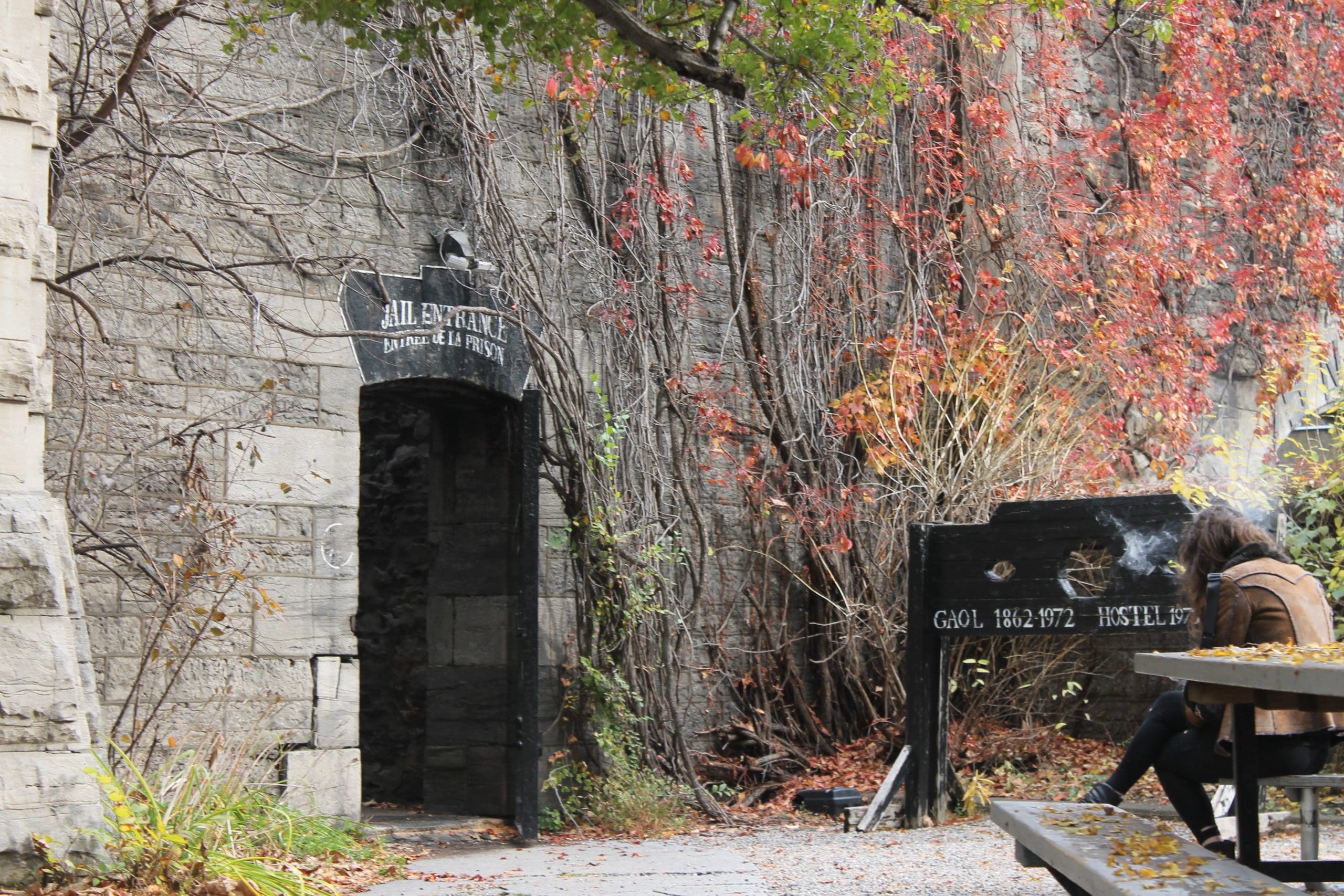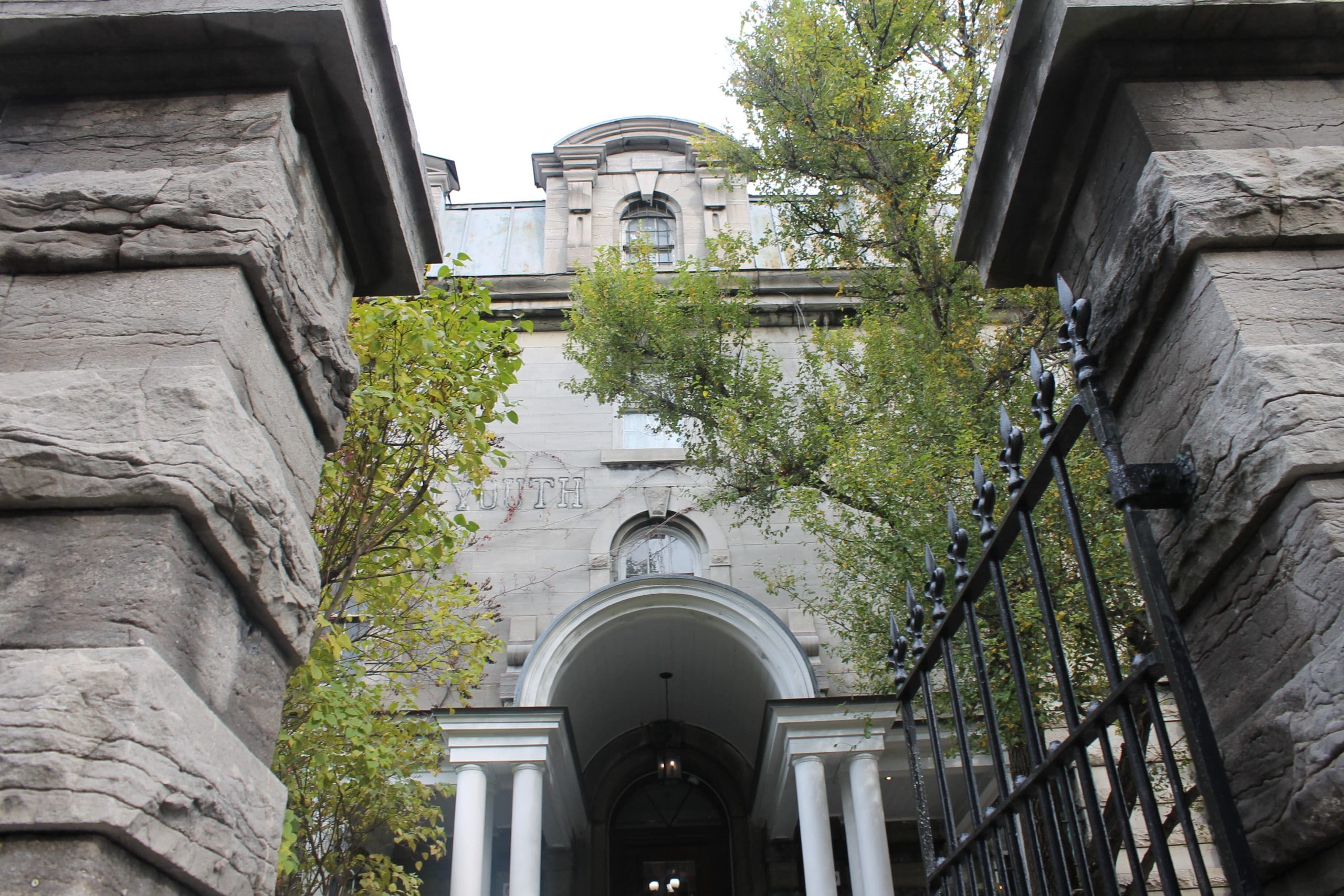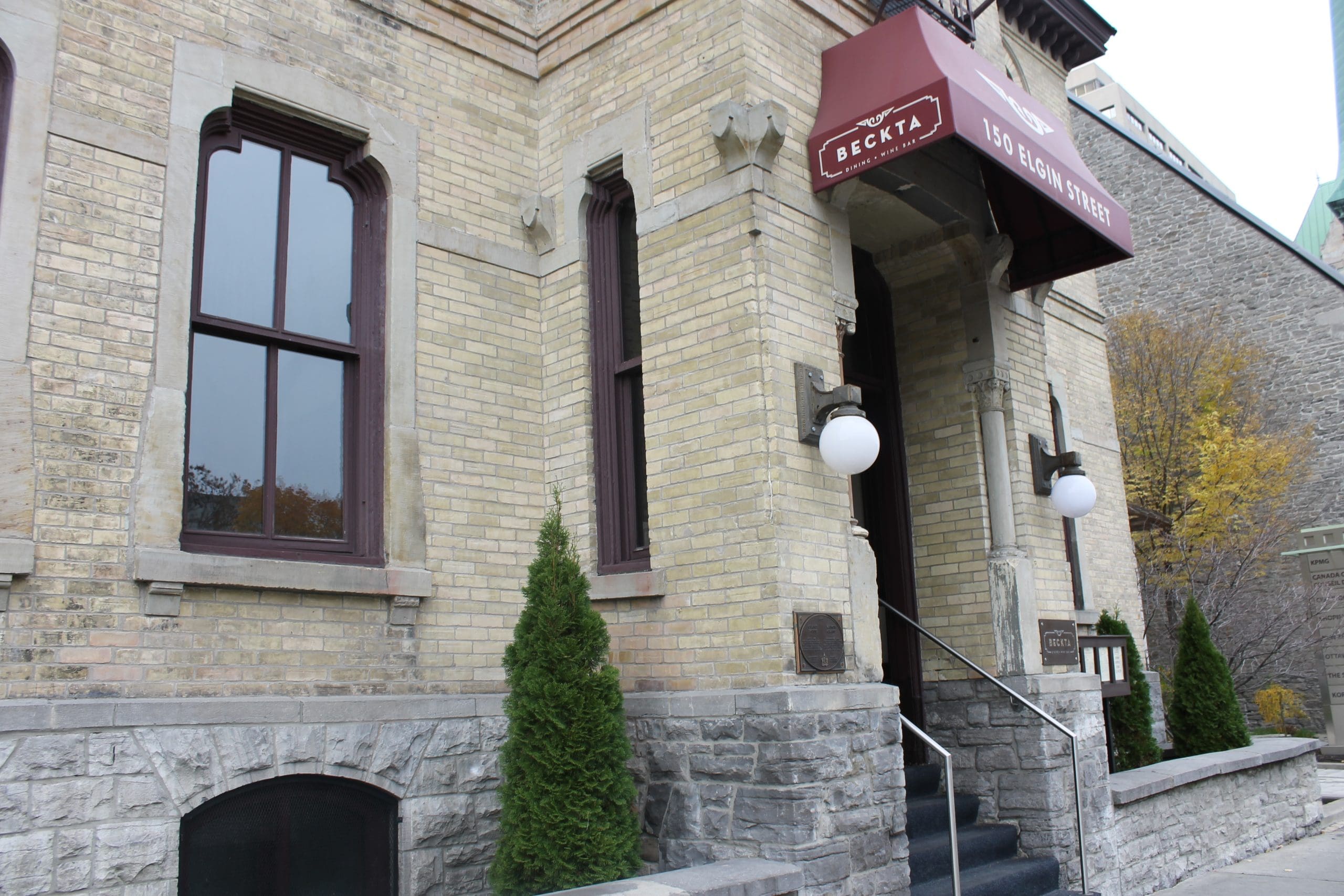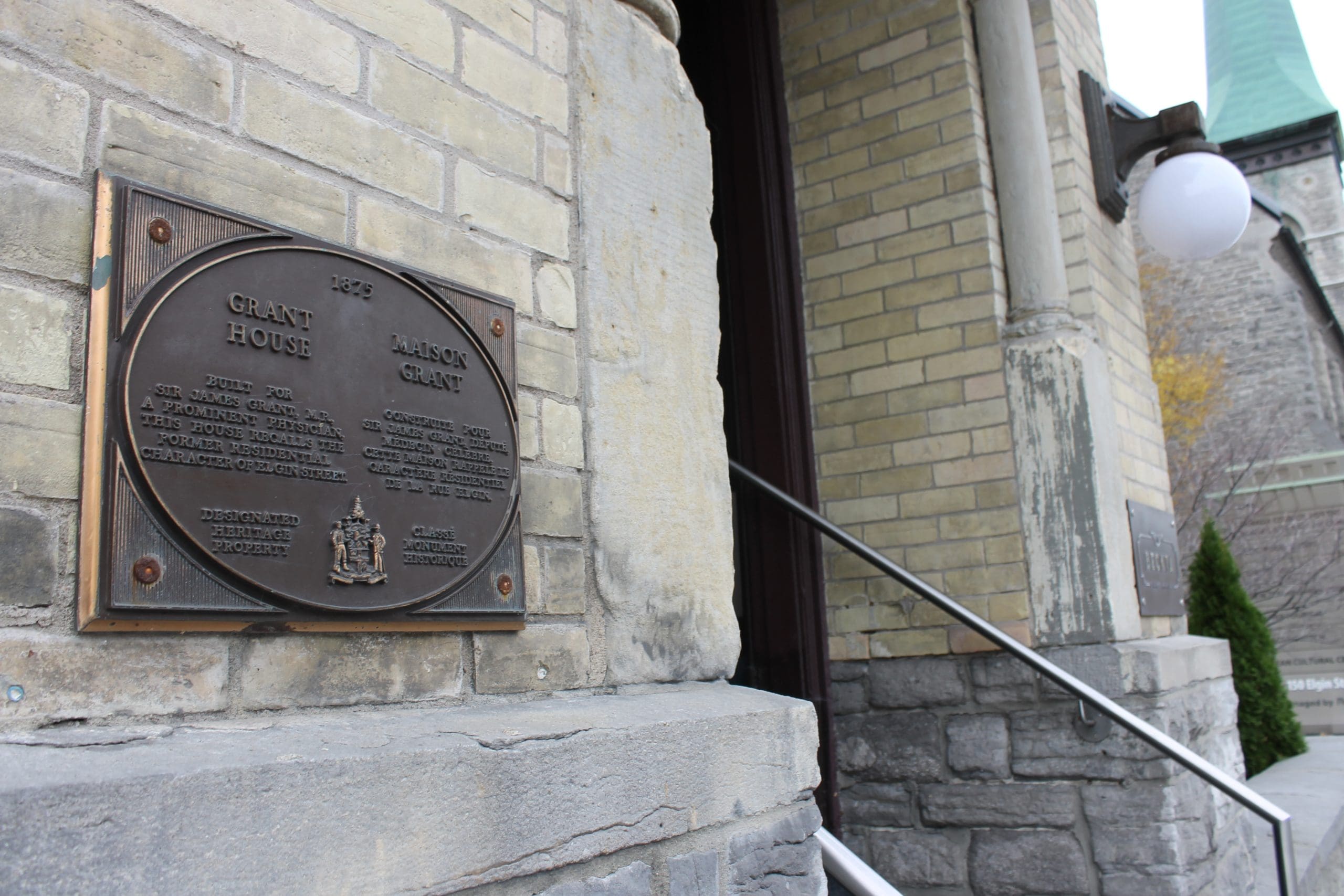In a city as old as Ottawa, it’s no surprise that the nation’s capital has its fair share of secrets and ghost stories. It may not be the country’s oldest city, but since its incorporation in 1855, Ottawa — first named Bytown — has been home to more than one restless spirit, if you ask local experts.
Jim Dean, creative director of Haunted Walks Ottawa, said Ottawa’s rich history makes it an intriguing place for ghost-hunting and paranormal activity. And while scary stories can be found nearly everywhere in Ottawa, he said there are a few places that seem to be hotspots for scary happenings.
Fairmont Chateau Laurier
Ottawa’s landmark hotel is at the top of many “most haunted places” lists for the city, which Dean said is largely due to both its “paranormal and more mainstream history.”
The Gothic-inspired architecture and regal turrets have made the hotel a top tourist destination in Ottawa, but it is also home to a ghost story that dates back to its earliest days.
Guests and staff alike have reported signs of paranormal activity over the years, Dean said, from unexplained voices and singing in hotel rooms and hallways to the sensation of unseen hands touching guests.
One of the recurring stories involves reports of a well-dressed elderly man wandering the halls, always in “old-fashioned” clothing.
The hotel was built in 1912 at the request of Charles Melville Hays, who was born in 1856 in Illinois and planned to build a continental railroad across Canada anchored by landmark chateau-inspired hotels along the path
However, 12 days before the Chateau opened, Hays drowned as a passenger of the RMS Titanic. Although he never visited the hotel, there are stories that his spirit inhabits its halls.
“Some people think that due to the missed opportunity to see one of his crown jewels of his hotel and railway line, after never getting to see the finished hotel, he’s returned after death to keep an eye on one of his greatest accomplishments,” Dean explained.

Bytown Museum
Now a museum dedicated to the rich history of Ottawa’s early days, the Bytown Museum first served as the treasury office for the workers who built the Rideau Canal.
The building dates back to 1827, and local rumour says that the stones used to build it were quarried by the same labourers, often poor Irish and French-Canadian immigrants, who worked under Colonel John By to build the Canal. Due to hazardous work conditions and strong physical demands of the job, many labourers are said to have been injured and even died at work.
Now, visitors and staff at the Museum report the sounds of unexplained footsteps, disembodied voices and shadowy figures in the building, suspected to be spirits of labourers who have never found rest.
Dean said staff have reported a television exhibit, which featured an educational video about the early lumber trade, but the video would begin playing unexpectedly, apparently of its own accord.
The museum’s proximity to the Fairmont hotel could also “amplify” paranormal activity, which is expected when two allegedly haunted places are very close to each other, Dean said. One of the most common reports is the sound of footsteps following visitors up the stairs, which he has personally experienced.
Some of the other interactions with alleged paranormal activity are difficult to explain or dismiss, he continued.
“We had a guest on one of our tours who didn’t seem particularly afraid going into the museum, but almost as soon as we got in, he left in a panic,” said Dean. “When the tour was over, he said he saw someone dressed in a soldier uniform standing inside the lobby asking him, ‘Why do they keep bringing all these people here?’
“When we got back to our ticket office, our person working the front desk that night was really an expert in military history, and had the person describe exactly what the soldier was wearing,” Dean continued. “The description of that uniform very closely resembles what would have been worn by the workers who were there when the canal was being built, and it is unlikely this guy would have known that ahead of time.”
As one of the oldest buildings in the city, Dean said the museum seems to be a sort of meeting place for a variety of spirits or paranormal entities who may have died or been injured over time.
“It’s a cool spot because not only is the building itself an artifact, but all the individual items inside of it are from different people, different places, different times,” said Dean. “And we wondered, when you bring all those various elements together, what happens? In the case of the Bytown, we think it results in one of the most haunted spots in the city.”
Beechwood Cemetery
The Beechwood Cemetery in Vanier is more than just a National Historic Site — it’s also the site of several ghost stories, many of which Dean said he finds “particularly disturbing.”
There are reports of children playing and talking to unseen entities, and when asked, they say they’re playing with the “other children.”
Some wonder if hauntings are ingrained into the buildings themselves; James Maher was the architect who designed the residences on the grounds of the cemetery, and he is also linked to some of the other supposedly haunted
Maher was a leading architect in Ottawa from his emigration here from his native Scotland in 1872 until his death in 1927. He was the architect responsible for many of Ottawa’s iconic buildings, like Lisgar Collegiate Institute, the ByWard Market Building, and the house on Laurier Avenue East that would become home to two prime ministers, Sir Wilfred Laurier and William Lyon Mackenzie King — all of which have their own share of spooky stories.
He is also buried at Beechwood, and Dean said some of Ottawa’s “most haunted buildings” and ghost stories can be linked back to Maher.
Ottawa Jail Hostel
If you ask an Ottawan about the creepiest place in the city, they might mention the Jail-turned-youth hostel on Nicholas Street, where tourists can stay overnight in prison cells in what used to be the main jail of Ottawa for more than 100 years.
The Nicholas Street Gaol (jail) was built in 1862 and in use until 1972, and it was known for inhumane inmate conditions as well as more than a few executions that took place on site. Up to 150 prisoners were allegedly forced to share 60 small cells and six solitary confinement units, and the inmates included murderers, the mentally ill and those incarcerated for minor offences like drunk and disorderly conduct.
“The jail certainly has a notorious history of the living conditions that the inmates were subjected to over the years and very draconian kind of treatments, being locked in their small, tiny cells for almost the entire day, only getting out for an hour at various times,” said Dean. “It is a spot that’s certainly very active in terms of paranormal activity.”
Perhaps most famously, the jail was the site of the hanging of Patrick J. Whelan in 1869 for the assassination of Irish-Canadian politician Thomas D’Arcy McGee, and this story has become the jail “claim to fame.” McGee was shot and killed on Sparks Street in 1868 by someone waiting inside the door of his boarding house, and Whelan was soon tried and convicted for the assassination.

Also an Irish-born Catholic, Whelan was found to be a critic of McGee’s policies, which some thought were sympathetic to the British. Despite maintaining his innocence, Whelan was executed on Feb. 11, 1869 by hanging at the jail, famously declaring, “I am held to be a murderer. I am here standing on the brink of my grave, and I wish to declare to you and to my God that I am innocent, that I never committed this deed.”
At the Gallows, it’s been recorded that Whelan’s last words were “God save Ireland and God save my soul.” He was hanged in front of 5,000 spectators.
Haunted Walks Ottawa has been conducting tours in the jail for about two decades, and in that time, people staying at the hostel have reported waking up to see a man sitting on the end of their bed reading a Bible.
Dean himself also reports using a handheld radio at the jail one night when what “can only be described as a demonic voice” came through the speakers. It was “incoherent” and “evil”, he recalls.
There is also an urban legend that Whelan is buried in an unmarked grave under the concrete slab below the gallows. Kids have been reported jumping on the slab to taunt the ghost, Dean explained, and tourists consistently get a nosebleed when standing over the concrete.
“I don’t know what the official count was, but over the years, we had easily over 50 nosebleeds start when people stood on that concrete slab underneath the gallows, so much so that it’s clearly not a coincidence,” Dean explained. “It could be maybe environmental factors, but there is something going on because standing underneath the gallows at the old Carleton County Jail that impacts people in a very, very physical way.
“These nose builds are unbelievably common, and that was one of our favourite stories to tell, because often you’d start telling the story to realize that someone in the group already has a Kleenex up to their nose,” he continued. “It’s possible he’s still there today, and wants people to know that he was innocent.”

Grant House
Now a favourite fine dining establishment, not all diners know that the building at 150 Elgin St. is said to be haunted by Dr. James Grant, who built the house in 1870.
“Elgin Street at that point would have had the homes of all the kinds of the wealthier citizens of the area. And Dr Grant was a very important person,” said Dean. “He was the official physician to the Governor General of Canada at that time.
He lived in his home on Elgin Street, named Grant House, until his death in 1920. Since then, the building has housed a variety of establishments, and staff have often reported having trays knocked from their hands, being tripped or pushed by an unseen force, and hearing disembodied voices and sounds.
Some have reported seeing an old man sitting in the window, and still others have said they hear wheezing and heavy breathing next to their ear — not knowing that Grant suffered from asthma.

In 2014, the building was bought by Stephen Beckta and became the fine dining restaurant it is today.
But before opening, Beckta took it upon himself to put some rumours — and spirits — to rest.
“The lore was that if a cigar and a cognac was left on the mantle in the room that Dr. Grant used to sit after dinner and smoke cigars, it would calm the ghost. So when we were about to open to the public in 2014, I opened a nice bottle of champagne in the room that was supposedly ‘haunted’ and told Dr. Grant that we would take great care of his home,” Beckta told Ottawa Compass. “I left him a full glass of champagne on the mantle in his glassware that his descendants had gifted us.
“I came back the next day, it was half gone, and we haven’t had any issues with ghosts in the 10 years we have been here.”

If you ask Dean, these might be some of the city’s hotspots for paranormal activity, but ghosts are easy to find in a city with as much history as Ottawa. According to him, ghosts and hauntings are everywhere, if you know how to look.
“It all goes back to the question, ‘what is a ghost?’. And while I can’t tell you what a ghost is, I can tell you it’s a very real thing that people experience,” said Dean. “Now, the cause of those events may be difficult to pin down.
“It could literally be dead people coming back to talk to us. It could be something else. That’s the fun of the game for me,” he continued. “But if you get a group of people together who honestly and earnestly kind of attempt to reach out in any location, it does seem like things happen.
As Haunted Walks gears up for the busiest time of the year, Dean said he and his team will keep asking the big questions (are ghosts real?) and trying to find answers — however they appear — all while taking the opportunity to learn more about the city.
“This is when they say the veil is thinnest. We love telling a ghost story, but we’re also able to share a lot of history about these different buildings and sites at the same time being, you know, extremely entertaining,” he said. “And hopefully inducing a few shivers as we tell the stories.”

